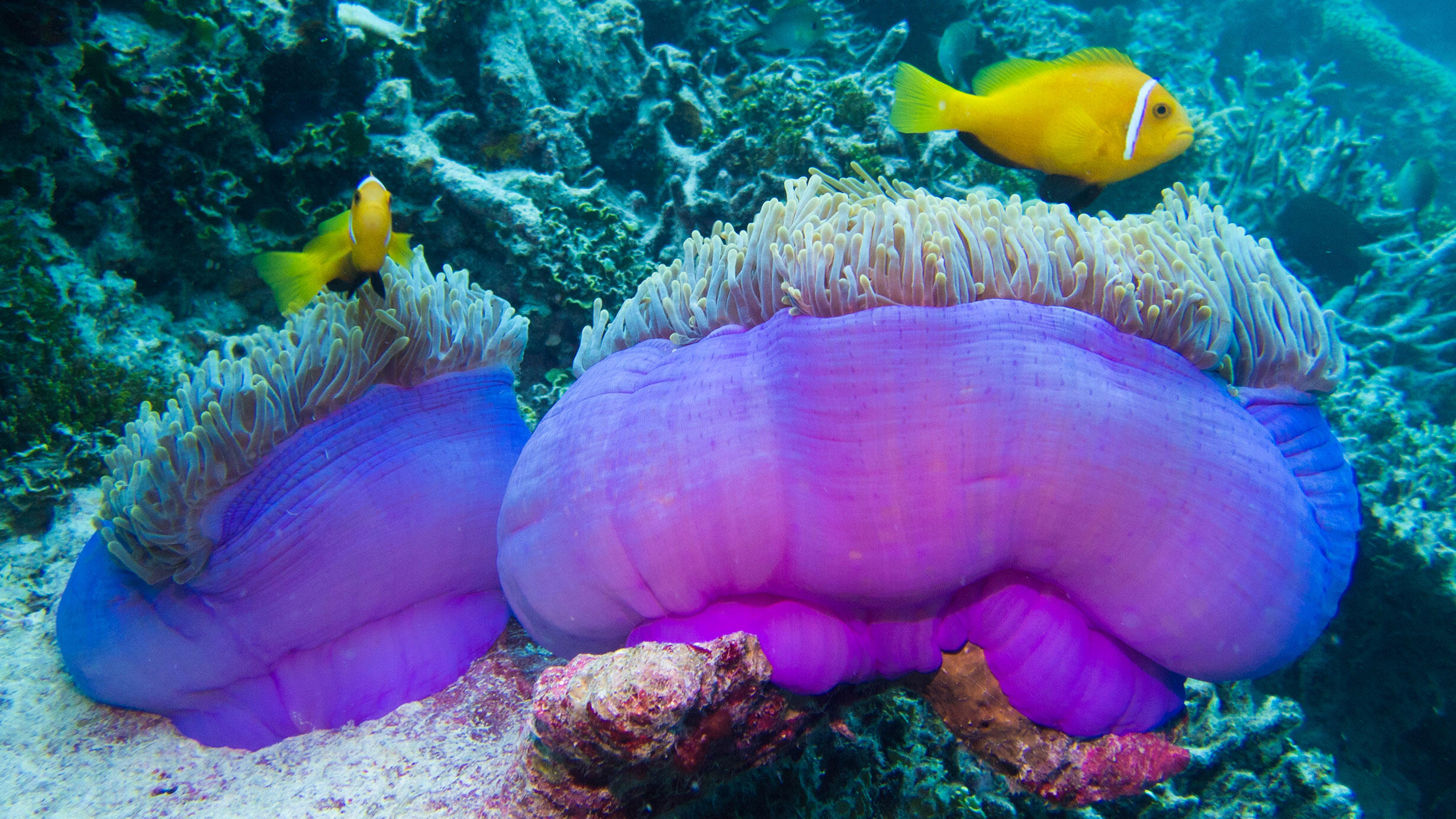 Clownfishes and sea anemones have a unique relationship that benefits each animal species.
Clownfishes and sea anemones have a unique relationship that benefits each animal species.B. Titus/© AMNH
The orange-and-white-striped clownfish has become somewhat of a celebrity thanks to the popular animated film Finding Nemo. But less is known about the colorful sea anemones that serve as homes for about 30 species of clownfish, protecting their “residents” from predators and gleaning nutrients from clownfish waste in return.
B. Titus/©AMNH
“It’s astounding that when we look at the relationship between clownfishes and sea anemones, which is perhaps one of the most popular examples of symbiosis out there, we have essentially no clue what is going on with one of the two major players,” said Estefanía Rodríguez, an associate curator in the Museum’s Division of Invertebrate Zoology and one of the co-authors of a new study published this month in the journal Molecular Phylogenetics and Evolution that presents new findings about the classification and origins of clownfish-hosting sea anemones.
To find out more about where anemones originated and when they evolved to have symbiotic relationships with clownfishes, the research team, led by Museum Gerstner Scholar and Lerner Gray Postdoctoral Fellow Benjamin Titus, built a phylogenetic tree based on DNA from newly collected anemone specimens.
Researchers found that the anemones evolved to host clownfishes three separate times in their history. Two anemone groups originated in the Tethys Sea, the ancient ocean near today’s Arabian Peninsula that separated the supercontinents of Laurasia and Gondwana during the Mesozoic Era, which ended about 65 million years ago with the mass-extinction event that led to the extinction of the non-avian dinosaurs. The Tethys Sea groups were also found to live at least 12 to 20 million years ago, and possibly earlier. The origins of the third group are not yet known, but Tethyan origins underscore that anemones likely evolved first in a different part of the world before clownfishes adapted to live with them in the marine area in the western Pacific Ocean, forging their special partnership.
“For a symbiosis that’s supposedly highly co-evolved, the groups originated in very different parts of the world and probably also at very different times,” Titus said.
To date, there are 10 described species of clownfish-hosting anemone, but scientists think that number is likely much higher. And an added challenge to studying both animals is the fact that they are under threat from the aquarium and pet trades.
“These are very heavily collected animals, but we don’t even know how many species exist in this group,” Rodríguez said. “We have a lot of work to do so we can determine what’s there now, what kind of threats they face, and how we can protect them.”